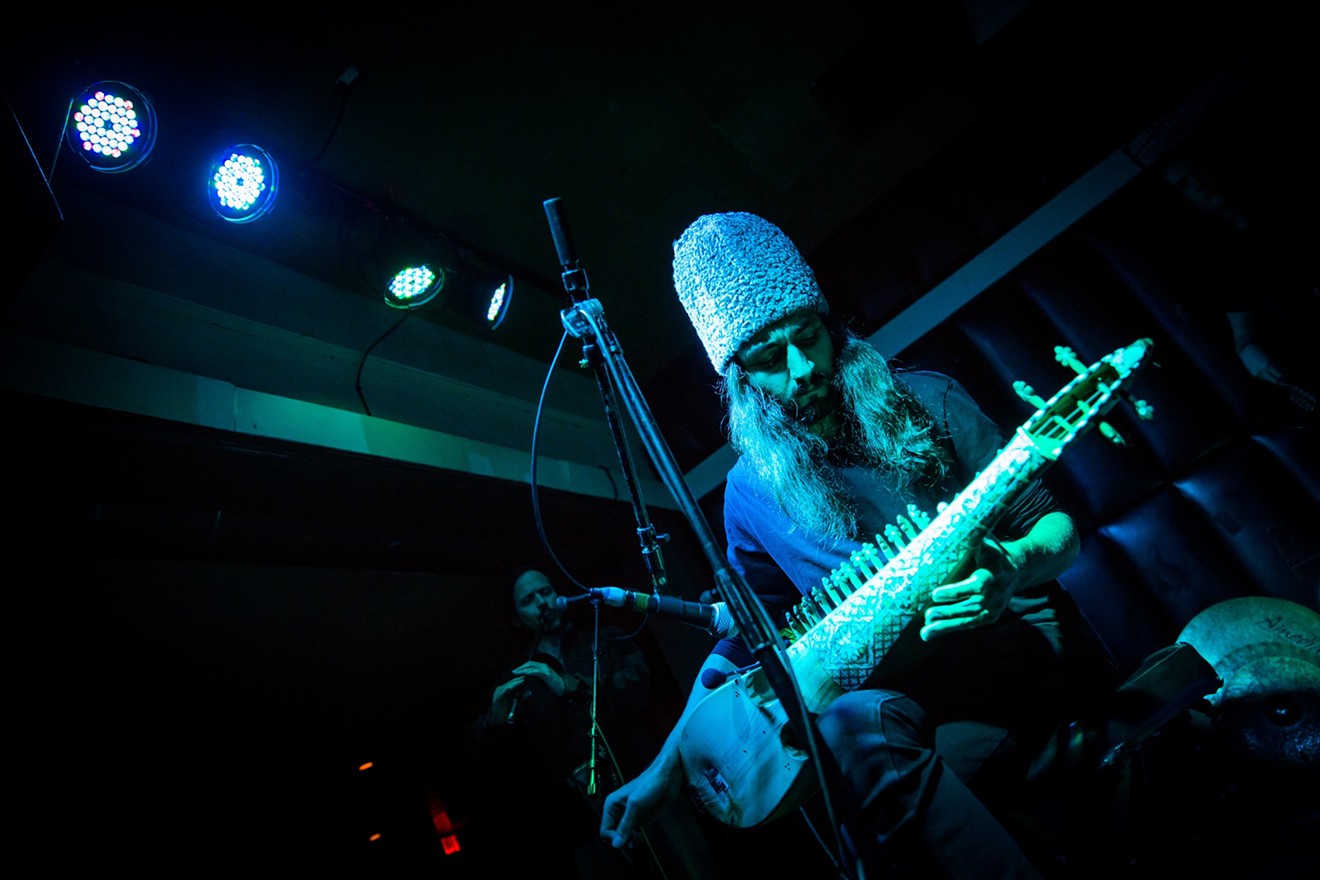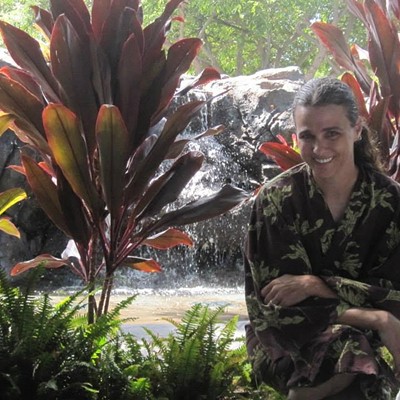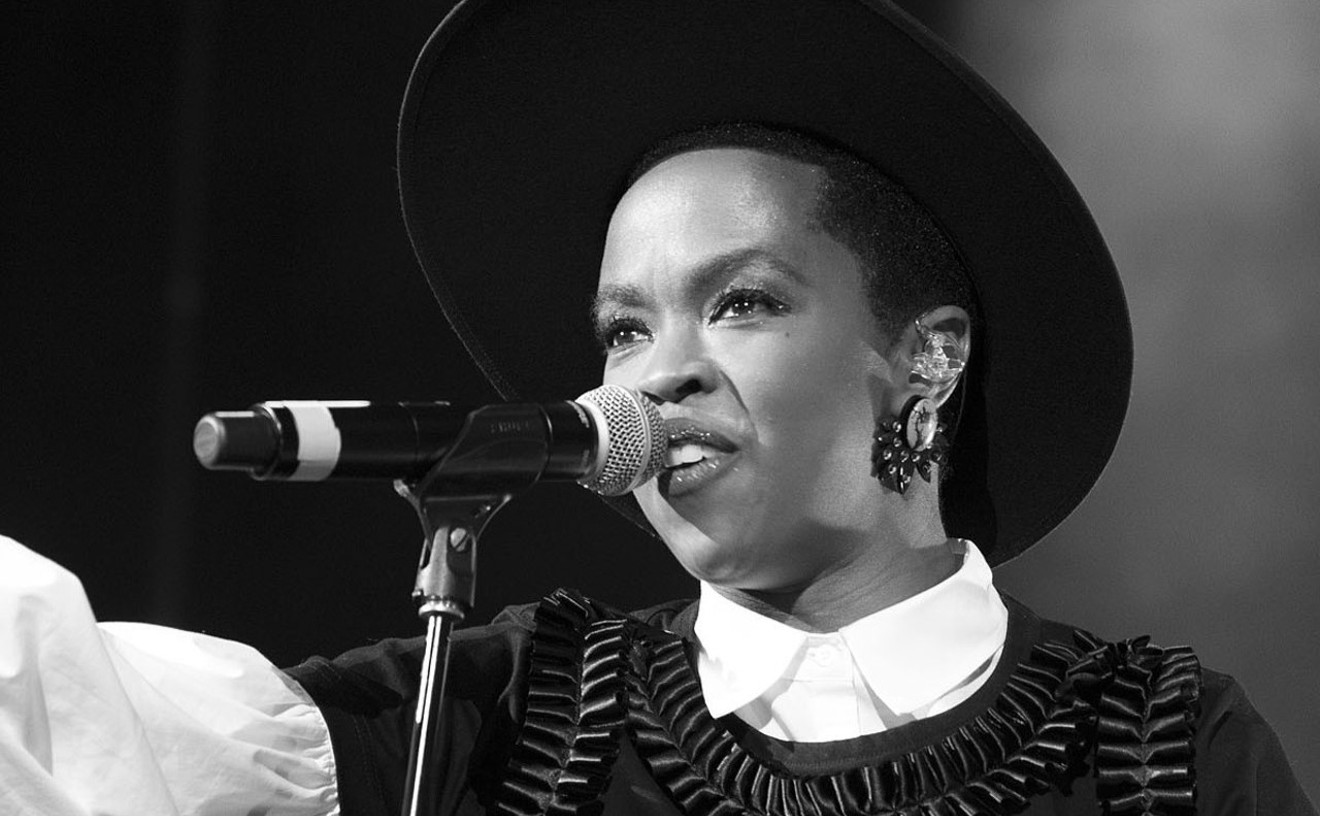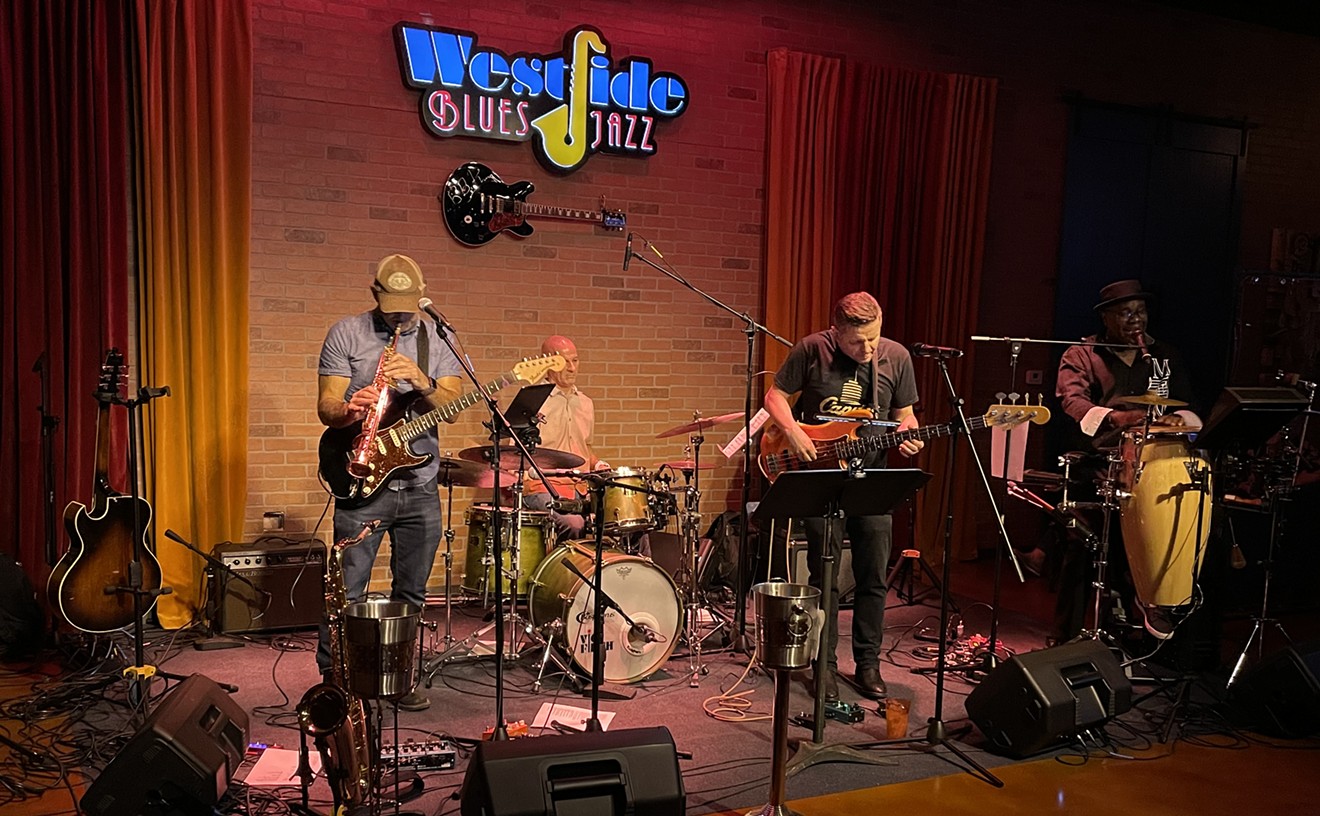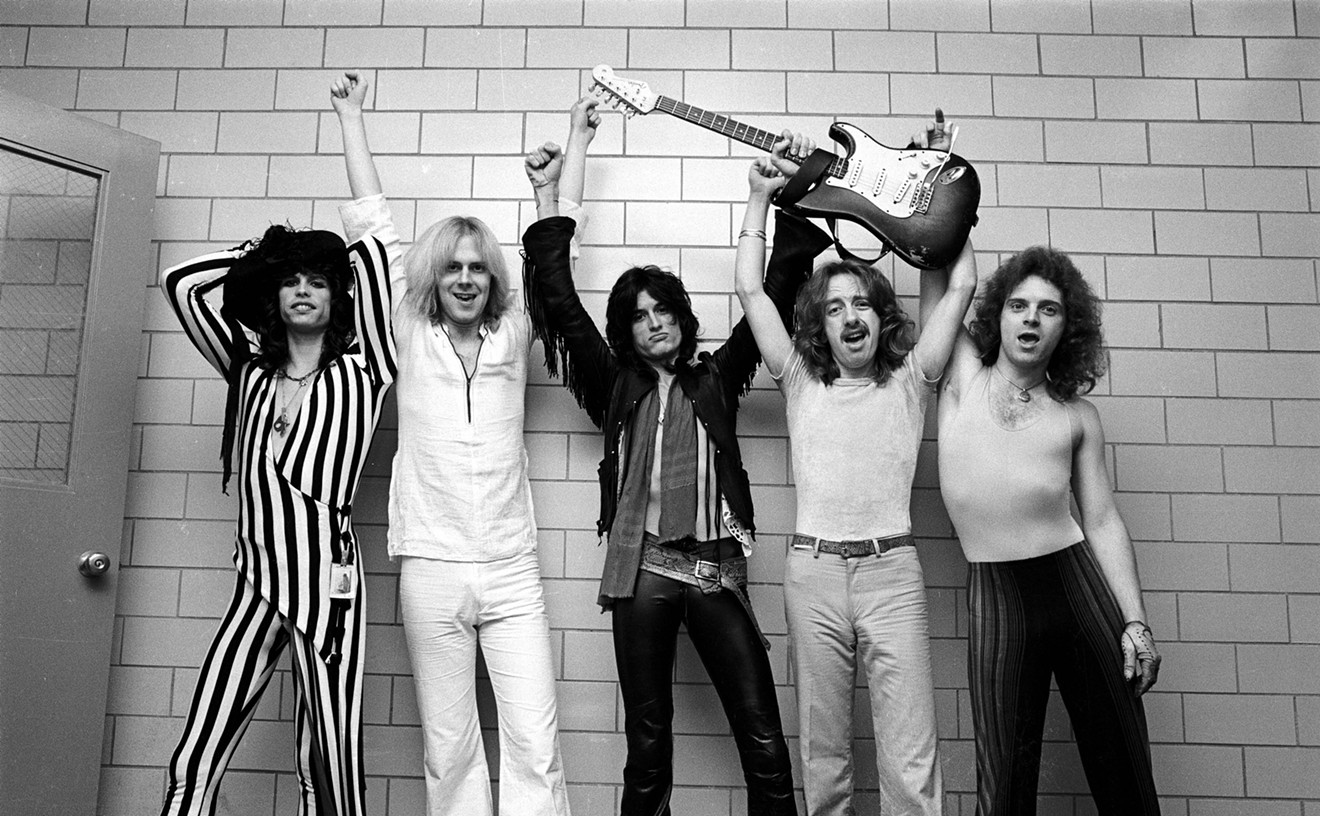Some people say couples who have been married for decades start to look like each other. Others joke that pet owners start to resemble their dog or cat after years of companionship. The idea that prolonged physical proximity can create a physical resemblance might be malarkey, but it is true that after more than 25 years of prolifically playing a lute-like instrument called the rabab, Qais Essar is a bit lute-like — dark and mysterious, long and lean, with a deep bottom line and resonance honed by generations of craftsmanship.
The rabab is the national instrument of Afghanistan. It is mentioned in ancient texts, and believed to be one of the first bowed instruments. Essar, 30, says the rabab is more than 2,500 years old. It is made of wood, with a long, hollow neck and an extremely deep body, which can make it awkward to hold. It has 21 nylon strings, but only three of those are played — the others are drone strings and sympathetic strings, there to add effect and resonance.
“It’s not that impressive,” Essar says. “I always call it an Afghan banjo.”
He’s made two albums, and recently assembled a backing band, the Qosmonauts, to play his more experimental, modern music. He wants to represent Afghan culture and take rabab music beyond its traditional folk sphere and classical realm and into a contemporary cachet that combines classical Afghan and Indian music with classical Western music. So far, he’s been successful, touring the world, playing prestigious stateside venues such as the Kennedy Center in Washington, D.C., and recording a track for a collaboration with Philip Glass and ABBA for the World Peace Day “Peace Tracks” project in 2015.
“It’s about learning to marry the two musical traditions in a way that almost creates like a new genre,” Essar says. “A lot of fusion beforehand has been kind of two interdependent things kind of set next to each other. But there’s not real fusion. And a lot of us in this arena almost cringe when we hear the word ‘fusion,’ just because it has almost like a negative connotation now. … It’s like the stuff that I’ll buy from a really lame gift shop or something.”
But there are no covers of “Kashmir” here, no Zamfir-esque elevator versions of “Chariots of Fire” or Carpenters songs. The tracks on Essar’s first album, The Green Language (2014) are primarily classical Afghan/Indian music, whereas his second album, last year’s Tavern of Ruin, employs a lot more instruments to enrich and modernize the sound. Those compositions are constructed around the rabab, but augmented with violin, bass guitar, drums, keyboards, and a variety of other instruments to create a soundscape that’s fully fleshed-out but still ethereal. The songs are a little bit groovy (in a hippie kind of way) but not New Age-y, despite titles like “Transmutation” and “Poppy Flowers Bloom in the Springtime of My Love.” (Filmmaker César Orozco made a bizarre and enchanting video for the latter song featuring a humanoid astronaut wandering deserts and surreally painted landscapes; watch it at therabab.com.)
Having the Qosmonauts behind him, Essar says, gives him “a completely different speakerbox. Whereas before, it was all classical stuff, now I have an avenue — I have a real way to perform the more experimental, contemporary stuff — which our sets generally are.”
Essar considers the players in the current Qosmonauts lineup — violinist Joshua Hill, kaval and kalimba player Eric Zang, bassist Dylan Paul Thomas, and drummer Jordan Thompson — among the best in the Valley. The band played its first show together at South by Southwest in 2016.
“When I play with Qais, I feel like I’m participating in some ancient and mysterious Afghan ritual. While his music comes from a traditional place, he arranges it in such a way that encourages exploration,” Hill says. “The result is primordial and psychedelic, like we’re flying through space on a spaceship designed thousands of years ago. I think what sets Qais’ music apart from other exploratory music is that it taps into emotional and spiritual themes rather than the cerebral trap that’s very common in improvised music.”
Essar is listed as one of eight “notable players” of the rabab on Wikipedia (he’s one of only five still living and has no Wiki page of his own). He was born in Scottsdale to Afghan parents who came to the U.S. as refugees in 1985, and began playing music when he was 6, starting with the tambour, which he describes as “like an archaic sitar,” and tried out several instruments before focusing on the rabab.
“The rabab just stuck. It’s cheesy,” he says. “Every single time I say it, it’s so cheesy — ‘Oh, it just captured my heart’ or whatever — but it’s absolutely true. I have no other way of saying it. It just fits. It’s not easy. It’s very limiting. You really can’t do many chords and stuff on it, even if you wanted to.”
He tunes his rabab about half an octave below the norm and says he tries to get as much out of the instrument as he can. He owns seven rababs, and he also has “around 20 guitars,” which he played a lot more when he was younger. “I was in a rock band when I was a kid. I did session work in college. I used to play bars in Tempe just for mad money … I was in a Celtic rock band, at some point,” Essar says with a laugh.
When Essar went to college at Arizona State University, he knew he wasn’t going to do anything but make music for a living, but he also knew he wasn’t going to study music at ASU.
“When I was younger — the discipline that goes into learning a lot of this music is so much. There’s so much actual playing and practice. There were some points where I would sit and I would practice for eight hours a day. And this went on for years,” Essar says. “So when I went to college, I thought, ‘This is an opportunity for me … to learn about my other interests,’ and that’s religion and political science. That’s the two things that I did.”
Politics and religion are part of music for Essar. Playing the rabab was rebellion in Afghanistan at one point. “That’s exactly why I’m doing this — because no one is,” he says. “Not only because of what’s going on in this country, but also because of what’s been going on historically for the past 50 years. From 1979 up until now, there was a 10-year war, followed by a four- to five-year civil war — it’s just been nonstop, and so music has really taken the backseat in the culture. So for those of us in the diaspora that have had the opportunity to be raised outside of that, for those of us [for whom] it is possible, [we] should be the purveyors of that culture, and help move that along.”
Though political conflicts have pushed many rabab makers into neighboring Pakistan, Essar says a healthy handmade rabab industry remains in Afghanistan, where the instrument is still widely played. “It’s very hard to kill music. The Taliban had a ban on music, but … there’s stories of artists that would bury their instruments or take them apart and put it into hiding, but I still imagine somewhere, there was rabab being played,” Essar says. “You can’t kill music. I feel it’s so very hard. Trump could put me in a camp tomorrow and I’d still be singing. It may not be a happy song, but I’d still be singing.”
Qais Essar is scheduled to perform at the Experience the Silk Road festival at the Musical Instrument Museum, January 14-15.
[
{
"name": "Air - MediumRectangle - Inline Content - Mobile Display Size",
"component": "18478561",
"insertPoint": "2",
"requiredCountToDisplay": "2"
},{
"name": "Editor Picks",
"component": "16759093",
"insertPoint": "4",
"requiredCountToDisplay": "1"
},{
"name": "Inline Links",
"component": "17980324",
"insertPoint": "8th",
"startingPoint": 8,
"requiredCountToDisplay": "7",
"maxInsertions": 25
},{
"name": "Air - MediumRectangle - Combo - Inline Content",
"component": "16759092",
"insertPoint": "8th",
"startingPoint": 8,
"requiredCountToDisplay": "7",
"maxInsertions": 25
},{
"name": "Inline Links",
"component": "17980324",
"insertPoint": "8th",
"startingPoint": 12,
"requiredCountToDisplay": "11",
"maxInsertions": 24
},{
"name": "Air - Leaderboard Tower - Combo - Inline Content",
"component": "16759094",
"insertPoint": "8th",
"startingPoint": 12,
"requiredCountToDisplay": "11",
"maxInsertions": 24
}
]

